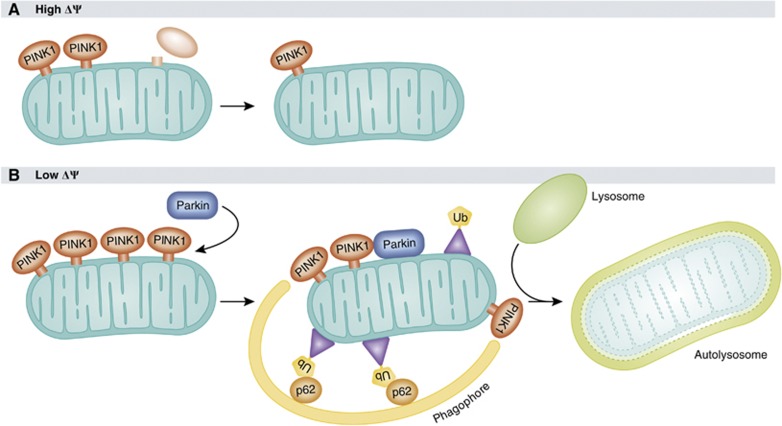Figure 2.
Mechanism of PINK1- and parkin-induced mitophagy. (A) When the mitochondrial membrane potential is high, PINK1 is imported into mitochondria, proteolytically processed and rapidly degraded, resulting in mitochondria with low levels of endogenous PINK1 under basal conditions. (B) Under conditions of low membrane potential, for example, after uncoupling with CCCP, full-length PINK1 accumulates on the mitochondrial surface, which is essential for the translocation of parkin to mitochondria. Parkin then ubiquitinates mitochondrial proteins at the outer membrane, followed by the recruitment of adaptor proteins, such as p62, which link ubiquitinated cargo to the autophagic machinery. Damaged mitochondria are engulfed by phagophores, which mature into autophagosomes and fuse with lysosomes to autolysosomes, which eventually degrade their content.

